Shoulder Pain: Causes, Treatments & Diagnosis
Shoulder pain is a typical symptom that has multiple possible causes. Your shoulder helps you to move your arms. Its wide range of movement makes it more at risk of damage.
Some of the most typical causes are arthritis, muscle strain, or dislocation. Therapy could include rest, medications, or surgery but it varies by the cause.
What is shoulder pain?
Shoulder pain is any pain you feel around your shoulder joint. The shoulder is a complex joint that helps you throw a ball, reach for an object, or give someone a high five. Because of how frequently you use it, your shoulder is more at risk of damage and injury, which can induce pain.
The shoulder joint, which consists of a ball and socket, is extremely flexible. It may injure for many reasons, from trauma and overuse to chronic conditions or illnesses. To receive the right care, you must identify the cause. When something goes wrong with your shoulder, it hampers your ability to move freely and can generate a great discount of pain and hurt. The humerus (long arm bone), clavicle (collarbone), and scapula (also called the shoulder blade) are the three main bones that make up the shoulder joint, which is a ball and socket type. A layer of cartilage softens these bones.
There are two major joints. The acromioclavicular joint is between the most elevated part of the scapula and the clavicle. The outer edge of the scapula and the upper, ball-shaped portion of the humerus bone combine to form the glenohumeral joint. This joint is also called the shoulder joint. It also permits the arm to move in a circular movement and to move up and away from the body. Shoulders get their range of movement from the rotator cuff muscles.
The rotator cuff is made of four tendons. Tendons are the tissues that attach muscles to bone. It may be painful or difficult to raise your arm over your head if the tendons or bones around the rotator cuff are injured or swollen. You can hurt your shoulder by performing manual labor, playing sports, or even by repetitious activity. Certain conditions can cause shoulder pain. These include illnesses of the liver, heart, or gallbladder in addition to cervical spine (neck) disorders.
You are more likely to have problems with your shoulder as you develop older, particularly after age 60. This is because the soft tissues covering the shoulder tend to deteriorate with age. Shoulder pain can be treated at home in many conditions. But other treatments like physical therapy, medication, or surgery might also be needed.
What does shoulder pain feel like?
Shoulder pain differs based on the reason but you can feel the following when in activity or at rest:
- Weakness.
- Aching or beating.
- Stiffness.
- Soreness.
- Popping.
Extreme shoulder pain that is usually the result of an injury may induce:
- Sudden pain.
- Sharp, stabbing pain.
- Limited ability to move your arm.
- Swelling.
- Bruising.
- Pain that exacerbates over time and never goes away.
- discomfort that keeps you from falling asleep or waking up.
If you have severe shoulder pain, see a doctor or the emergency room (ER).
What causes shoulder pain?
multiple factors and diseases can contribute to shoulder pain. The most typical reason is rotator cuff tendinitis. This is a situation characterized by swollen tendons. Another typical cause of shoulder pain is impingement syndrome where the rotator cuff muscles get caught between the acromium (part of the scapula that covers the ball) and humeral head (the ball portion of the humerus).
Occasionally shoulder pain is the result of damage to another location in your body, usually the neck or biceps. This is understood as referred to pain. Moving your shoulder usually doesn’t make referred pain worse.
Other reasons for shoulder pain include:
- Arthritis
- Torn cartilage
- Torn rotator cuff
- Swollen bursa sacs or tendons
- Bone spurs, which are bony protrusions that form around the borders of bones
- a compressed nerve in the shoulder or neck
- Broken shoulder or arm bone
- frozen shoulder
- Dislocated shoulder
- Injury due to overuse or repetitive use
- Spinal cord injury
- Heart attack
The complicated anatomy of your shoulder joint can help you understand why your shoulder hurts. Your healthcare provider can determine which part of your shoulder is affected by the location of your shoulder pain. Additionally, it can assist in determining whether the diagnosis is connected to a more serious condition (like breast cancer treatment) or a particular activity or event (like a swimmer’s shoulder).
Different pain sites of the shoulder indicate:
Pain Outside of the Shoulder
Several things can lead to shoulder pain outside the joint. A tear in the rotator cuff, which aids in lifting and rotating your arm, is the most frequent cause.
Rotator Cuff Problem
Your shoulder is moved by the deltoid muscle, one of the four rotator cuff muscles. Rotator cuff issues come in four primary forms:
- Tendonitis: The humerus, a ball-shaped bone that fits into a socket in the shoulder blade, and the muscles that connect it to your upper arm can become inflamed due to improper posture.
- Bursitis: This is bursa inflammation (a space filled with fluid).
- Rotator cuff tear: A tear is the painful effect of tendons of the rotator cuff pulling away from the humerus bone.
- Impingement: This type of pain happens when you lift your arm. It’s caused by the tip of your shoulder blade rubbing against the tendon and bursa situated between the rotator cuff and the shoulder blade.
Rotator cuff problems generate pain, especially with movements like reaching or throwing. The deep, hurting shoulder pain tends to aggravate or flare up at night. It can easily wake you up from rest or make it difficult to fall asleep.
Rotator cuff problems can be associated with a limited active range of movement. Since it is hard to voluntarily move your injured or inflamed muscle, your shoulder may feel stuffy. But if someone does the work for you by raising your arm (passive movement), your shoulder will likely move normally.
Frozen Shoulder
Also named adhesive capsulitis, frozen shoulder is a common disease that shows joint stiffness and pain, which can be persistent and often occur unexpectedly. There is also a reduction in both active and passive range of movement.
While many shoulder disorders, including rotator cuff tendinitis, can be associated with a frozen shoulder, the reason is usually unknown. About 85% of people analyzed with frozen shoulder have another medical condition, and these risk factors include
- Diabetes
- Cancer
- Thyroid disease
- Heart disease
- Kidney stones
- Parkinson’s disease
Previous shoulder damage or surgery also can lead to a frozen shoulder.
Calcific Tendonitis
Calcific tendonitis happens when calcium crystals are deposited within a tendon, most typically within the rotator cuff tendons. This disease typically induces progressive shoulder pain that is more harmful at night and with overhead motions, like putting on a sweatshirt.
Some individuals develop a chronic case of this form of tendonitis. Many others find that the symptoms settle on their own with rest, physical therapy, and pain management.
Fractured Humerus
A fracture in the shoulder joint bones, or upper arm bone, can also cause pain on the outside of the shoulder. This type of rupture may happen when you fall on your shoulder onto an outstretched arm.
Front Shoulder Pain
Pain in the anterior of the shoulder is most generally related to the biceps tendon, which connects deep inside the shoulder. Conditions include:
- Biceps tendonitis
- Biceps tendon tears
- Superior labrum anterior-posterior (SLAP) tears
- Osteoarthritis
Bicep Tendonitis
Biceps tendon issues usually cause gradual pain at the front of the shoulder that can persist down over the biceps muscle. The pain usually aggravates after repetitious lifting, moving heavy bags, or overhead movements. It can intensify at night. Issues with the biceps tendon may also generate a clicking sound when the shoulder is rotated in an arc.
Biceps Tendon Rupture
If the biceps muscle tears away near the joint, the biceps tendon may rupture. An abrupt “pop,” an intense flare-up of pain, bruises, edema, and often a lump directly above the antecubital fossa (the region in front of your elbow) are all signs of a biceps tendon rupture.
SLAP Tears
A more effective labrum One particular kind of tear in the glenoid labrum, or shoulder joint cartilage, is the anterior-posterior tear. A fall onto an outstretched hand is one frequent cause.
Athletes who throw overhead, such as baseball pitchers, and workers who perform repetitive overhead tasks frequently sustain this tear. Deep shoulder pain and a popping sound during movement are possible symptoms.
Shoulder Osteoarthritis
You may experience stiffness and either deep or anterior shoulder pain when you have osteoarthritis. Active and passive ranges of motion are typically reduced.
An injury to the arm, neck, or shoulder that happened years ago may occasionally occur before shoulder arthritis. Surgery for a joint replacement may be necessary if it is severe.
With this kind of wear-and-tear arthritis, pinched nerves are also linked. Numbness in the arms is one of the other symptoms that may arise.
Fractured Clavicle
A fractured clavicle may induce pain in the anterior of the shoulder. Your clavicle is also named as your collarbone. When you break this bone, you may feel a sharp pain in the front of your shoulder. There may also be a reduction in range of motion and an audible snapping sound when you try to move your arm.
Top-of-the-Shoulder Pain
The most common reason for pain in the top of the shoulder is the problem of the acromioclavicular joint (AC) joint. Problems of the AC joint include:
- AC arthritis
- AC separation
- Distal clavicle osteolysis
AC Arthritis
Arthritis can generate smooth cartilage to wear away, cartilage roughness, and bone spurs, which may restrict mobility. Exposed bone and irregular cartilage covers may generate crepitus (a grinding sensation), particularly when you go overhead or across your chest.
AC Separation
AC separation, also named shoulder separation, can happen after a fall right onto your shoulder that affects the ligaments surrounding your AC joint. Depending on the severity of your ligament injury, a lump may form above your shoulder due to the separation of your scapula, or shoulder blade, from your collarbone.
Distal Clavicle Osteolysis
At the end of the collarbone, distal clavicle osteolysis causes a sharp or aching pain. Weightlifters and other people who frequently lift or carry heavy objects are most likely to be affected.
The scapula is supported by the clavicle, which permits unrestricted arm movement. Any issue with this architecture may result in shoulder pain, weakness, or instability.
Poor Posture
The top of your shoulder’s back side may hurt if you slouch or sit with your head forward. This type of pain can happen after spending a lot of time staring at a phone or computer with bad posture.
Pain All Over the Shoulder
Your shoulder’s muscles, ligaments, and tendons work together to keep it stable. In the case that these tissues rip or become loose, shoulder dislocation or instability could happen.
Shoulder Instability
As the name suggests, instability results in joint loosening. Overuse or a traumatic injury (dislocation) may be the cause. Unstable shoulders can give you the impression that they’re about to pop out of the joint.
Persistently loose ligaments can cause multidirectional instability.19 Young, athletic people are typically affected by this condition, which causes a subluxation of the shoulder, which is the sensation that the shoulder is not staying tightly in place. A common description of the feeling is that of a “dead arm” with an excessive range of motion in the shoulders.
Shoulder Dislocation
When the top of the arm bone separates from the scapula, it can cause a dislocation injury. The healthy ligaments holding the shoulder in place may have been harmed by a dislocation. Afterward, there’s a higher chance of the shoulder dislocating once more.
Why Does My Shoulder Hurt at Night?
Because the shoulder is more compressed when you lie down, some shoulder problems worsen at night. Nighttime flare-ups of tendonitis, bursitis, and rotator cuff tears are common. Certain sleeping positions, such as lying on one’s stomach with arms overhead, can also cause shoulder pain.
Does shoulder pain indicate a possible heart attack?
A heart attack is not indicated by shoulder pain alone. Call your local emergency services number right away if you experience sudden, severe left-sided shoulder pain along with any of the following symptoms:
- Chest pain.
- Back, stomach, arms, jaw, and neck pain, on the left side of your body.
- Breathlessness or dyspnea is the problem.
- Feeling dizzy or lightheaded.
- Sweating.
- Nausea.
Breast Cancer and Shoulder Pain
Although it is less common, shoulder pain may indicate breast cancer. This may be the result of fractures brought on by cancer-related bone abnormalities or bone pain from breast cancer that radiates to the shoulder. It can also happen when cancer has spread to the liver, causing shoulder pain.
How is the cause of shoulder pain interpreted?
Your physician will want to determine what is causing your shoulder pain. They will ask to see your medical history and perform a physical assessment.
They will examine your range of motion, and joint stability, and feel for any soreness or swelling. Diagnostic imaging tests, like MRIs and X-rays, can provide finely detailed images of your shoulder.
- Is the pain in one shoulder or both?
- Did this pain begin suddenly? If so, what were you doing?
- Do other body parts experience the pain as well?
- Can you pinpoint the area of pain?
- Does it hurt when you’re not moving?
- What specific movements hurt more than others?
- Is the pain dull or is it sharp?
- Does the pain keep you awake at night?
- What movement makes it more harmful and what makes it feel better?
- Has your shoulder pain caused you to restrict your daily routine?
Diagnosis
Your healthcare provider will carefully review your symptoms, perform a physical examination, and occasionally order imaging tests to make an accurate diagnosis because there are numerous possible causes of shoulder pain.
Physical Examination
Once your symptoms and medical history have been examined, your healthcare provider will thoroughly examine your shoulder. To check for soreness or deformity, they will apply pressure to various parts of your shoulder. Your shoulder range of motion and arm strength will also be tested.
To rule out non-shoulder-related causes of your pain, your healthcare provider may also examine other parts of your body, such as your neck or abdomen.
Imaging
You might need one or more of the following:
- X-ray: An X-ray of the shoulder can show minor problems such as bone spurs or injuries to the bones that may point to osteoarthritis.
- Magnetic resonance imaging (MRI): The muscles, ligaments, and tendons that surround the shoulder joint are shown in great detail in these test results. An MRI, for example, can reveal details regarding the location, extent, and severity of a rotator cuff tear.
Differential Diagnoses
Shoulder pain does not always originate in the shoulder, despite the obvious logic of the exact opposite. A herniated disc in the neck or gallbladder disease are two conditions that can occasionally be linked to pain in the general shoulder region, which is frequently difficult to diagnose.
Rarely, bleeding from the liver or spleen may manifest as shoulder pain. Your doctor might concentrate on that diagnosis if they are worried about an alternative cause that isn’t related to your shoulder joint.
In the event of a suspected heart attack, for example, an electrocardiogram (ECG) might be prescribed. For suspected gallbladder disease, an abdominal ultrasound may be requested.
What are the treatment options for shoulder pain?
What causes and how bad the shoulder pain is will determine how it is treated. Physical or occupational therapy, a sling or shoulder immobilizer, or surgery are a few possible treatment options.
Additionally, nonsteroidal anti-inflammatory drugs (NSAIDs) or corticosteroids may be prescribed by your doctor. Strong anti-inflammatory medications called corticosteroids are administered by injection into the shoulder or orally by your doctor.
If you’ve had shoulder surgery, be sure to carefully adhere to the aftercare instructions. Treatment for mild shoulder pain can be done at home. For several days, applying ice to the shoulder three or four times a day for 15 to 20 minutes at a time can help ease pain.
Ice directly on the skin can burn and cause frostbite; instead, use an ice bag or wrap the ice in a towel. It can be beneficial to avoid any movements that might cause pain and to rest the shoulder for a few days before returning to regular activity. Reduce the amount of overhead labor or activities.
Using nonsteroidal anti-inflammatory drugs that can be purchased over-the-counter to help with pain and inflammation management as well as applying an elastic bandage to the affected area to reduce swelling are two more at-home treatment options.
Furthermore, a treatment plan that works for one problem might not work as well or even be harmful for another. You should consult a medical professional before starting any kind of treatment. Not every condition can benefit from every treatment that is on this list. But depending on your circumstances, some might help with shoulder pain relief.
Rest
For many common types of shoulder pain, resting the joint and letting the irritation or inflammation go away is the first line of treatment. Shoulder immobilization may occur in certain situations. When you are resting a joint, take care not to let it get too stiff.
Improve Posture
It’s important to pay attention to your posture if you spend a lot of time hunched over your phone or computer. Adjust your head so that it is in line with the screen and sit upright in your chair. Make sure to extend your shoulders. At the first sign of slouching, try to straighten up your posture.
Ice and Heat Application
The most common use of ice packs is for reducing pain and swelling following an acute shoulder injury. Additionally, they can be used to treat overuse injuries to the shoulder (such as bursitis or tendinitis in the rotator cuff).
To reduce the amount of inflammation that develops in these situations, ice is applied immediately following the overhead activity. Chronic shoulder conditions can also be treated with heat pads, but usually not right before an overhead activity is done.
Heat can ease pain, ease stiffness, and relax muscles. Speak with your physical therapist or healthcare provider before using heat or ice. To ensure that you heal properly, you should create a detailed plan that outlines the timing and length of each treatment.
Physiotherapy Treatments for Shoulder Pain
Heat and cold therapy, manual therapy, stretching and strengthening exercises, joint mobilization, and nerve stimulation are a few of the scientific and evidence-based physiotherapy treatments for shoulder pain.

- Heat & Cold Therapy: It has been proven that switching between hot and cold packs will help promote healing, offer immediate relief, and lessen pain, stiffness, and inflammation. Still, in cases of severe pain or injury, this method works well. Experts advise treating the affected area with a cold pack for at least 20 minutes. Heat can be applied for a minimum of fifteen minutes after this. Be careful not to place the ice pack directly on the skin when using this technique.
- Manual Therapy: A specific type of physical therapy called orthopedic manual therapy uses manual examination and treatment methods. Additionally, this method conforms to the biopsychosocial model of care. Traction, massages, trigger point therapy, stretches, lymph drainage, and other methods are frequently used in treatment. These techniques are thought to be non-invasive and successful in promoting muscle inhibition, tissue, modeling and repair, lowering nociceptive activity, and eliciting a favorable placebo response.
- Exercises: Weight-bearing exercises, resistance exercises, and gentle stretching and strengthening exercises all aim at reducing pain and increasing physical strength and functionality. The degree of your injury and your restricted range of motion are taken into consideration when modifying these exercises. Furthermore, strengthening the upper limbs, increasing the range of motion, and improving posture are the objectives of different shoulder physiotherapy exercises.
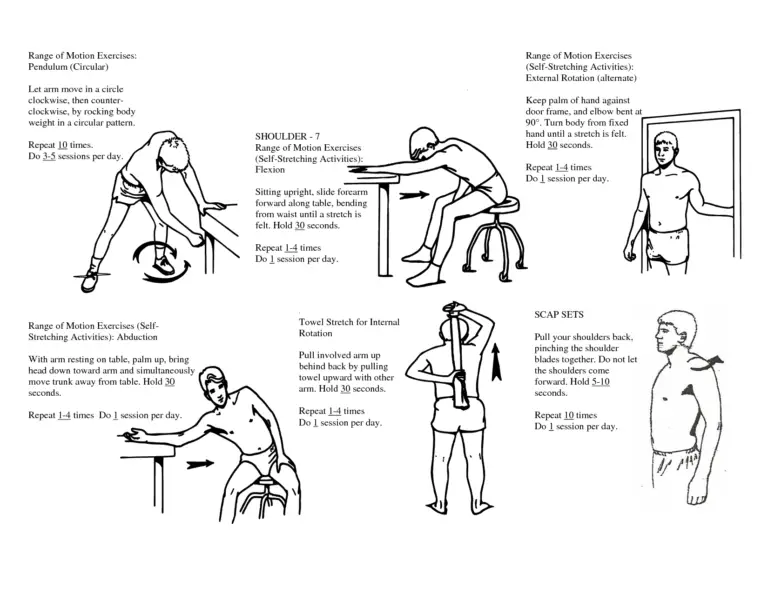
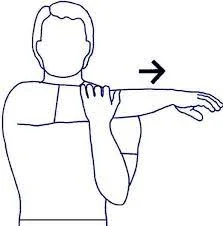
- Nerve stimulation: Recent research indicates that Peripheral Nerve Stimulation (PNS) is a useful method for treating acute or chronic shoulder pain. The technique uses electric currents that target the axillary and suprascapular nerves for pain reduction. A little electric device is placed after a peripheral nerve. As this device has electric currents you may sense mild tingles. This feeling finally replaces the ache. In addition to this, you can maintain the duration of stimulation through a controller or an app on your phone.
- Joint mobilization: Shoulder joint mobilization targets all four joints of the shoulder adding the glenohumeral joint, the scapulothoracic joint, the sternoclavicular joint, and the acromioclavicular joint. Common methods like medial/lateral glides, upward and downward rotation, diagonal patterns, and superior/inferior glides are issued. These procedures help enhance the range of movement, relieve pain and inflammation, and reduce the risk of future trauma.
- Stretching: Stretching activities can help reduce pain while you are at home. Try putting one arm across your chest and pulling it smoothly with your opposite arm to stretch the back of your shoulder. Maintain for 30 seconds, then alternate arms.
Medications
The two main common medicines used to relieve shoulder pain and swelling are nonsteroidal anti-inflammatories (NSAIDs) and steroid injections.
NSAIDs: Certain NSAIDs are prescribed, like Voltaren (diclofenac), while others, like ibuprofen, are available over-the-counter. These are primarily used to treat tendonitis, bursitis, and arthritis of the shoulder.
It’s essential that you use them carefully and only as directed by your healthcare professional. Since NSAIDs carry some risks, let your doctor know if you are expecting or if you have any other health issues, such as:
- Hypertension
- Asthma
- Kidney disorder
- Liver disorder
- Stomach ulcers
Steroid Injection
With a steroid injection, your doctor will give you a shot of cortisone a powerful steroid medication that decreases inflammation—into your shoulder. An injection can help relieve pain and help you contract in physical therapy sessions more efficiently.
Surgery
In many cases, and probably as a last resort, surgery may be required if conservative measures are not working or if your shoulder injury is intense from the start. Shoulder surgery needs the services of an orthopedic surgeon and may involve one of several methods, such as Latarjet surgery.
How can shoulder pain be treated at home?
The RICE method can be used at home to treat mild shoulder pain.RICE stands for:
- Rest.
- Ice.
- Compression.
- Elevation.
This includes:
- Acetaminophen or NSAIDs (nonsteroidal anti-inflammatory drugs) should be taken as prescribed for pain and inflammation.
- Applying an ice pack to your shoulder. If you have swelling in your shoulder, avoid applying heat as it may exacerbate the condition.
- Stretching your muscles.
- Massaging your shoulder.
- Resting.
Prevention
Easy shoulder exercises can help rotator cuff tendons and muscles become more flexible and strong. You can learn how to perform them correctly from an occupational or physical therapist. If you have previous shoulder issues, use ice for fifteen minutes after exercising to prevent future damage.
You can prevent a frozen shoulder by doing daily simple range-of-motion exercises after going through bursitis or tendinitis. Sometimes a few simple adjustments at home can help avoid shoulder pain. Ensuring that rugs are secure and floors are free of clutter, helps to reduce the chance of trips and falls.
You can also try to:
- Stay healthy by exercising, including your shoulder muscles.
- For the health of your bones, make sure you are getting enough calcium and vitamin D.
- Enhance balance and flexibility (with yoga, for example).
- Stretch before doing an action (even household chores).
- Avoid raising over your head by adjusting kitchen storage or closets.
Sometimes, your shoulder can hurt because of repetitious use. For example, if your job demands the same motion (whether lifting things or sitting at your computer), consider how to prevent damage by taking frequent breaks and using good posture.
How do I sleep with shoulder pain?
Shoulder pain can impact your capacity to fall asleep and stay asleep. If you are in pain, try the following recommendations to help you fall asleep:
- Sleep on your back instead of on your side.
- Use a blanket or pillow to rest the arm of your involved shoulder to keep it level and supported.
- Use a memory foam pillow.
When to See a Healthcare Provider:
It is time to seek medical attention if you have new, declining, or severe shoulder pain. Other symptoms that need attention may include:
- An injury that generates joint deformity
- Difficulty in using your arm or carrying objects
- Inability to lift your arm
- Shoulder pain that happens at night or while resting
- symptoms of an infection, such as warmth, redness, and fever
- swelling or severe bruises close to your arm or joint
- A referred pain (or a problem that originates elsewhere in the body) could be indicated by abdominal pain or another unexplainable symptom.
Note
It can be difficult to get rid of shoulder pain if you do not know what is causing it. Your symptoms may make it difficult for you to move, use your arm, or get a good night’s sleep. A healthcare provider can diagnose what is causing shoulder pain so you can feel better sooner.
FAQ
How long can shoulder pain persist?
It may take four to six weeks for mild shoulder pain to go away completely. To help reduce shoulder pain, there are a few things you should and shouldn’t do. Usually, it takes two weeks of doing these exercises for shoulder pain to start getting better.
What is the main reason for shoulder pain?
The most common cause of shoulder pain is a trapped rotator cuff tendon below the shoulder’s bony structure. Tendons can get damage or inflammation. This is referred to as bursitis or tendinitis of the rotator cuff.
What relieves shoulder pain?
Apply a heat pack or covered hot water bottle to your shoulder several times a day for about 20 minutes to release tense or achy muscles. taking NSAIDs and painkillers regularly throughout the day. Take ibuprofen and paracetamol, for example. putting an NSAID cream or gel on the shoulder area that hurts.
Can I even exercise with shoulder pain?
After an injury, easy exercises for shoulder pain can help you regain your strength and stick to a regular exercise schedule. Start the healing process with simple shoulder exercises as soon as your doctor gives.
What is the diagnosis procedure for shoulder pain?
Your physician may request specific tests to help determine the cause of your pain and any other problems. X-rays. X-rays will show any damage to the bones that make up your shoulder joint. ultrasound and magnetic resonance imaging (MRI).
Where does shoulder pain feel?
People who suffer from shoulder pain may feel pain in the upper arm, back, or front of the shoulder, as well as deep within the shoulder joint. Shoulder pain can occasionally be characterized as a “catching pain.”
References
- Pietrangelo, A. (2023, May 22). Why does my shoulder hurt? Healthline. https://www.healthline.com/health/chronic-pain/shoulder-pain#prevention
- Professional, C. C. M. (n.d.-h). Shoulder pain. Cleveland Clinic. https://my.clevelandclinic.org/health/symptoms/25122-shoulder-pain
- Cluett, J., MD. (2024, January 6). Causes of shoulder pain and treatment options. Verywell Health. https://www.verywellhealth.com/shoulder-pain-2548793
- Shoulder pain. (2017, March 8). WebMD. https://www.webmd.com/pain-management/why-does-my-shoulder-hurt
- familydoctor.org. (2023, June 6). Shoulder pain. https://familydoctor.org/shoulder-pain/



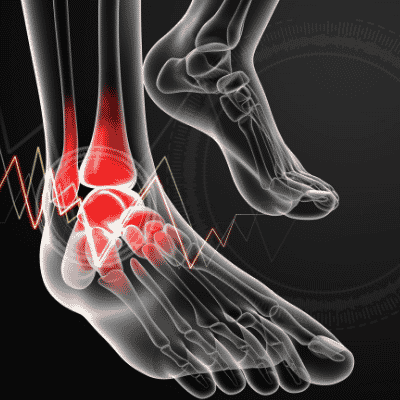
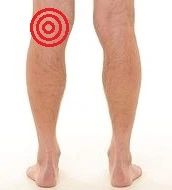
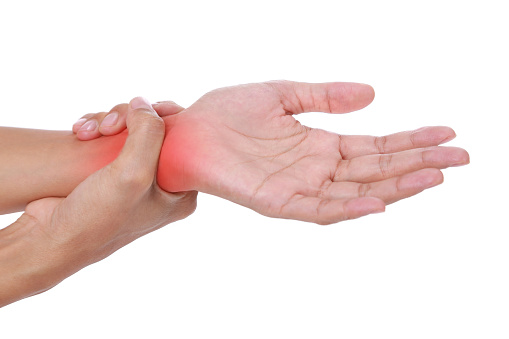
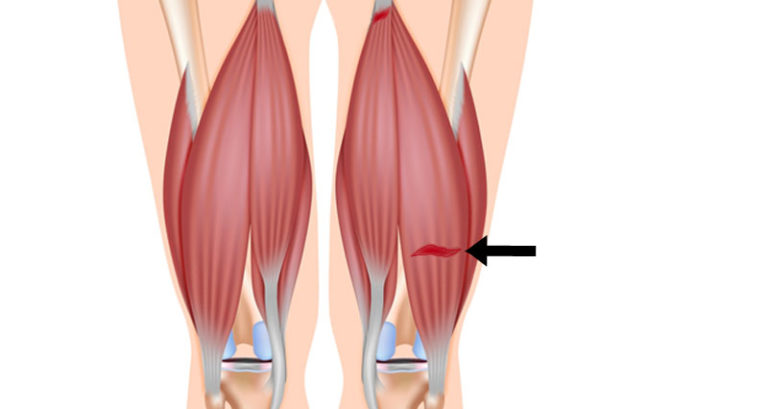

4 Comments